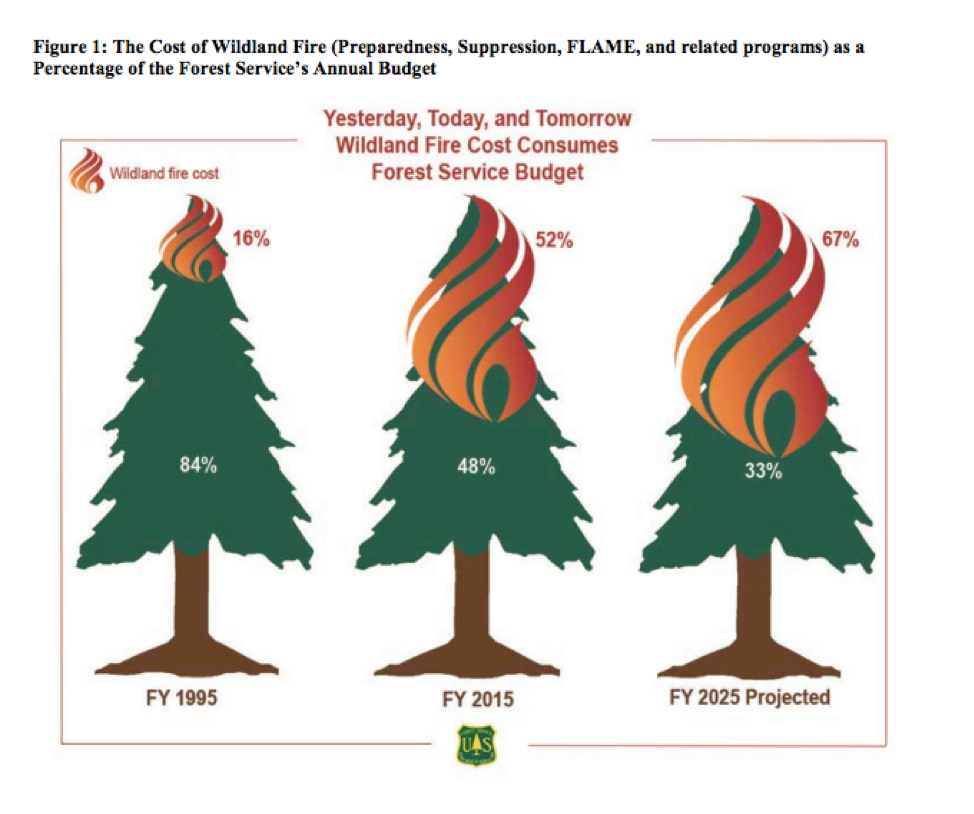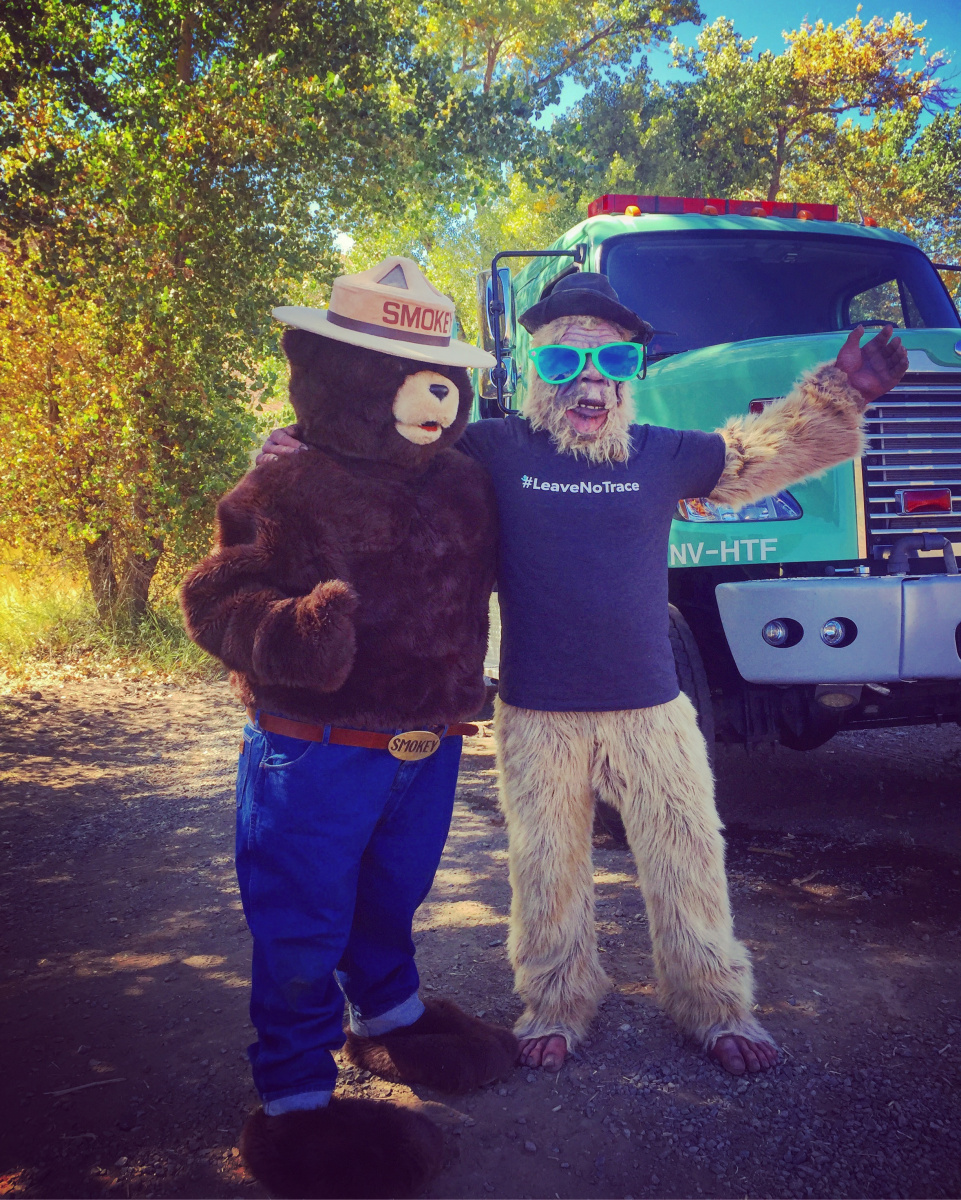Skills & Techniques
In an Age of Catastrophic Wildfire, Leave No Trace More Important than Ever


Santa Fe, NM: Over 100 years ago, President Theodore Roosevelt established the U.S. Forest Service to manage what would become America’s 193-million acre national forests and grasslands for the benefit of all Americans. Today, that mission is being consumed by the ever-increasing costs of fighting fires.
In the past 20 years, the portion of the Forest Service’s budget that is dedicated to fire was underestimated and as a result fire management started borrowing from other activities of the Forest Service, like recreation, restoration, invasive weed control, capital improvements, maintenance, and facilities. The decrease in funding resulting from increased fire costs has limited the agency’s ability to provide vital recreational opportunities on National Forest lands.
Impacts to Our Lands
This has resounding impacts on visitor experiences to Forest Service lands and the people that work hard to provide recreational opportunities. More than half of all administrative facilities on Forest Service lands need improvement, with approximately 41 percent in poor condition needing major repairs or renovation, approximately 12 percent in fair condition needing some minor repair, and 47 percent of the facilities in good condition.

It also means the Forest Service has a harder time protecting Endangered Species. Because of the reduction in funding, the Forest Service has been unable to fulfill all of the required monitoring associated with previous Endangered Species Act (ESA) consultation commitments, reducing the agency’s ability to implement projects in the future and jeopardizing current projects because ESA consultation requirements cannot be met. The agency has had to forego many projects critical to Threatened and Endangered Species recovery and conservation efforts.
The dramatic shift of funding and human capacity from non-fire programs to support fire programs has real implications on the ground, including ripples on restoration work that would help prevent catastrophic fires, protect watersheds that provide clean drinking water to tens of millions of people, protect irreplaceable cultural resources, and provide the infrastructure and programming that supports the $646 billion outdoor recreation economy and jobs and economic growth in hundreds of rural communities.
Thankfully, the law that allowed for fire activities to “borrow” from non-fire activity budgets within the Forest Service was changed and will go into effect in Fall of 2019. Instead of borrowing money from other programs, the U.S. Forest Service and the Department of the Interior can pull from a $2.25 billion emergency fund. This may seem like a lot of money, and a perfect respite to undoing the negative impacts on recreation and maintenance funds, but in 2017 the Forest Service spent $2.4 billion on wildfire suppression, with 9.7 million acres burned last year.
More and More Fires
The six worst fire seasons since 1960 have all occurred since 2000, someone has to ask, why?
One reason is that climate change has led to fire seasons that are now on average 78 days longer than in 1970. The U.S. burns twice as many acres as three decades ago and Forest Service scientists believe the acreage burned may double again by mid-century.
While the Forest Service and its firefighting partners are able to suppress or manage 98 percent of fires, catastrophic mega-fires like the ones witnessed this summer burn through the agency’s resources. Just one to two percent of fires consume 30 percent or more of annual costs. Last year, the Forest Service’s 10 largest fires cost more than $320 million dollars. California has already spent about one-fourth of its annual fire emergency budget in July, the first month of the state’s fiscal year.
Our Role
We know that many of these fires are human caused. Humans accounted for nearly 90 percent of all wildfires from 1992 to 2017, according to an article last year from the National Academy of Sciences. As our cities and towns push into wilderness, and as we escape on public lands to get out of our cities, it is essential that we take our role in preventing fires more seriously. If 90 percent of fires are caused by humans, it means 90 percent of fires are preventable by humans. We can each do our part in our outdoor recreation pursuits by following Leave No Trace’s 5th Principle, Minimize Campfire Impacts.

The first step in having any camp fire is to know where and when fires are allowed. This summer we saw several National Forests in the West close completely due to stage three fire restrictions. Observing the local fire danger and weather conditions before we choose to start a campfire is one of the easiest steps in preventing recreation-cause wildfires.
Once we choose to have a safe campfire, we must be equipped to make sure our fires are dead out before retiring for the night or leaving camp. The only true mark of a dead fire is one where the coals are cold to the touch. This may require several buckets full of water and vigorous stirring to accomplish, but the energy is well worth it. We no longer recommend dirt or sand as an appropriate method of extinguishing fire, as the sand can extinguish the flame without ridding the fire of the heat necessary to reignite.
Finally, we can ask ourselves if it’s always necessary to have a campfire. Fire is traditionally used in the outdoors for cooking, warmth, light, or social reasons. Today we’re able to accomplish all four of these objectives with alternatives like camp stoves, warm clothing, headlamps, and a simple deck of cards or ghost stories.
Our simple actions on each and every outdoor trip can add up in a huge way to help protect our land, air, water, and wildlife from the devastating effects of catastrophic wildfires.
Enjoy Your World. Leave No Trace.
Leave No Trace’s Donielle Stevens and Aaron Hussmann are part of the 2018 Subaru/Leave No Trace Traveling Trainer Program that provides free, mobile education to communities across the country. Proud partners of this program include Subaru of America, REI, Eagles Nest Outfitters, Deuter, Thule, Taxa, and Klean Kanteen.
Resources
https://www.fs.fed.us/sites/default/files/usfs-fy18-budget-overview.pdf
https://www.fs.fed.us/sites/default/files/2015-Fire-Budget-Report.pdf
https://apnews.com/40673a50471d4335a31a558a6668e6ba
https://www.wta.org/news/signpost/how-trail-funding-works-fighting-fire-with-recreation-budgets
https://www.rei.com/blog/news/congress-reaches-deal-to-fix-wildfire-funding
https://wilderness.org/blog/5-big-myths-about-wildfire
https://www.outsideonline.com/wildfire-funding-congress
https://ewp.uoregon.edu/sites/ewp.uoregon.edu/files/WP_81.pdf
Let’s protect and enjoy our natural world together
Get the latest in Leave No Trace eNews in your inbox so you can stay informed and involved.
